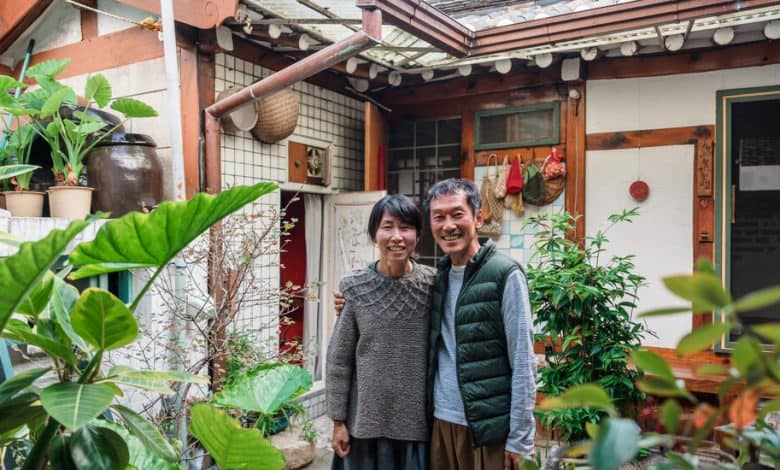Holding Onto Korea’s Past, a Tile at a Time

In this city of high-rise apartments and uber-hip coffee shops selling $8 lattes, the handiwork of maintaining hanoks is a devotion to a slowly vanishing piece of history.
In two neighborhoods, a pair of hanoks — traditional Korean homes, both built over 100 years ago — are being carefully preserved. One a museum, the other a renovated home, these hanoks remain much as they always have, even as Seoul continues its vertical ascent around them.

Tourists visiting the Bukchon Traditional Culture Center, housed in a century-old hanok, a part of the Bukchon Hanok Village in Seoul.
On one fall afternoon — what turned out to be the final day of work before another South Korean winter set in — Choi Jae Pil, a certified master artisan, or wa-gong in Korean, and three colleagues were putting the finishing touches on one section of the roof at the Bukchon Traditional Cultural Center in the city’s centuries old Bukchon Hanok Village. Mr. Choi has been restoring hanoks for almost 45 years. He is perfectly at home among the black clay tiles that line the gently sloping roofs of the timber and stone-block buildings.
The neighborhood, which contains some 900 hanoks, including private homes, guesthouses, restaurants and teahouses, draws throngs of tourists throughout the year. And the cultural center, once home to a prominent Korean family, houses a visitors’ center and museum of about a dozen rooms that explains the history and building techniques of the hanok style. Like any century-old home, it needs frequent repair.
